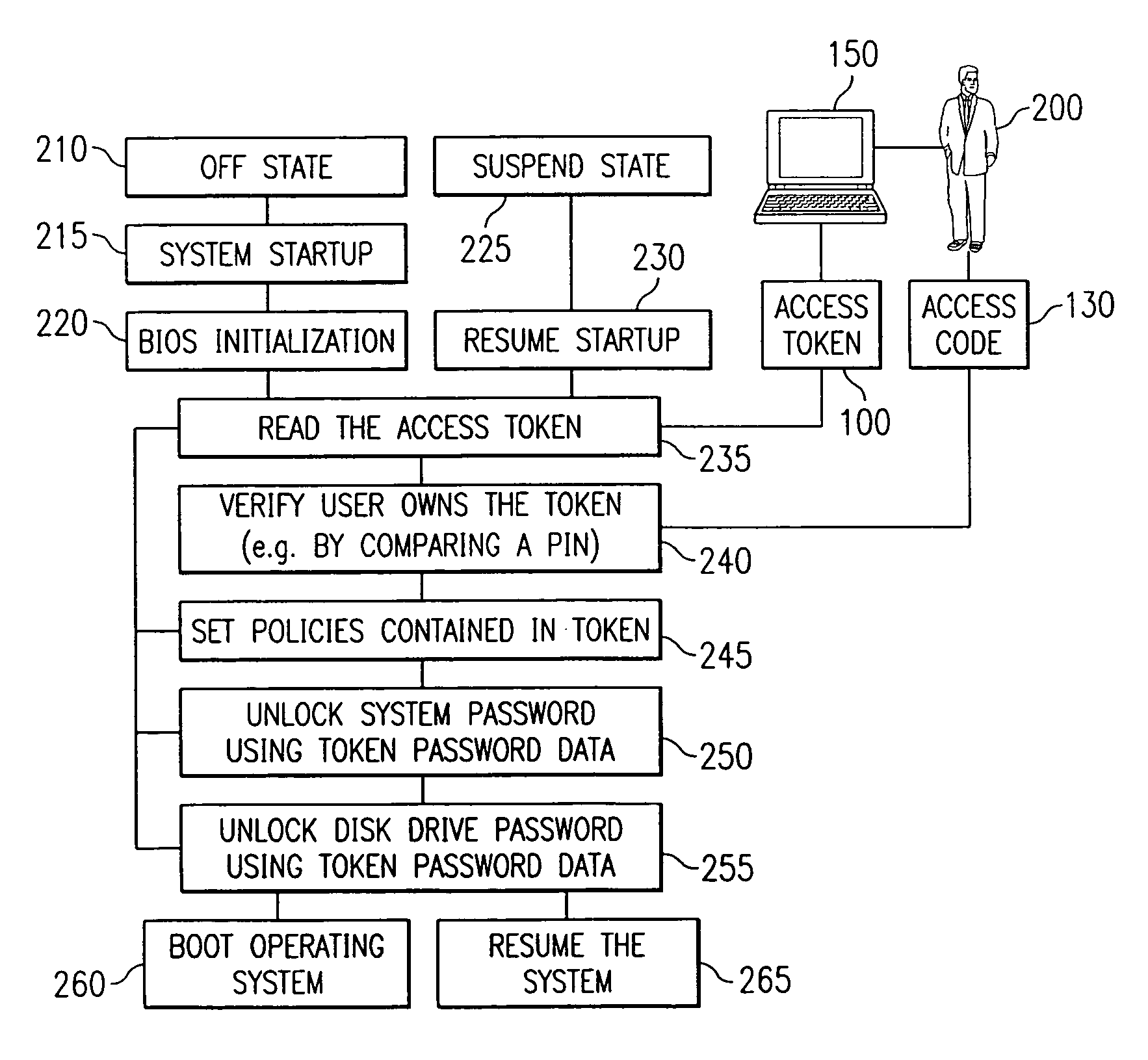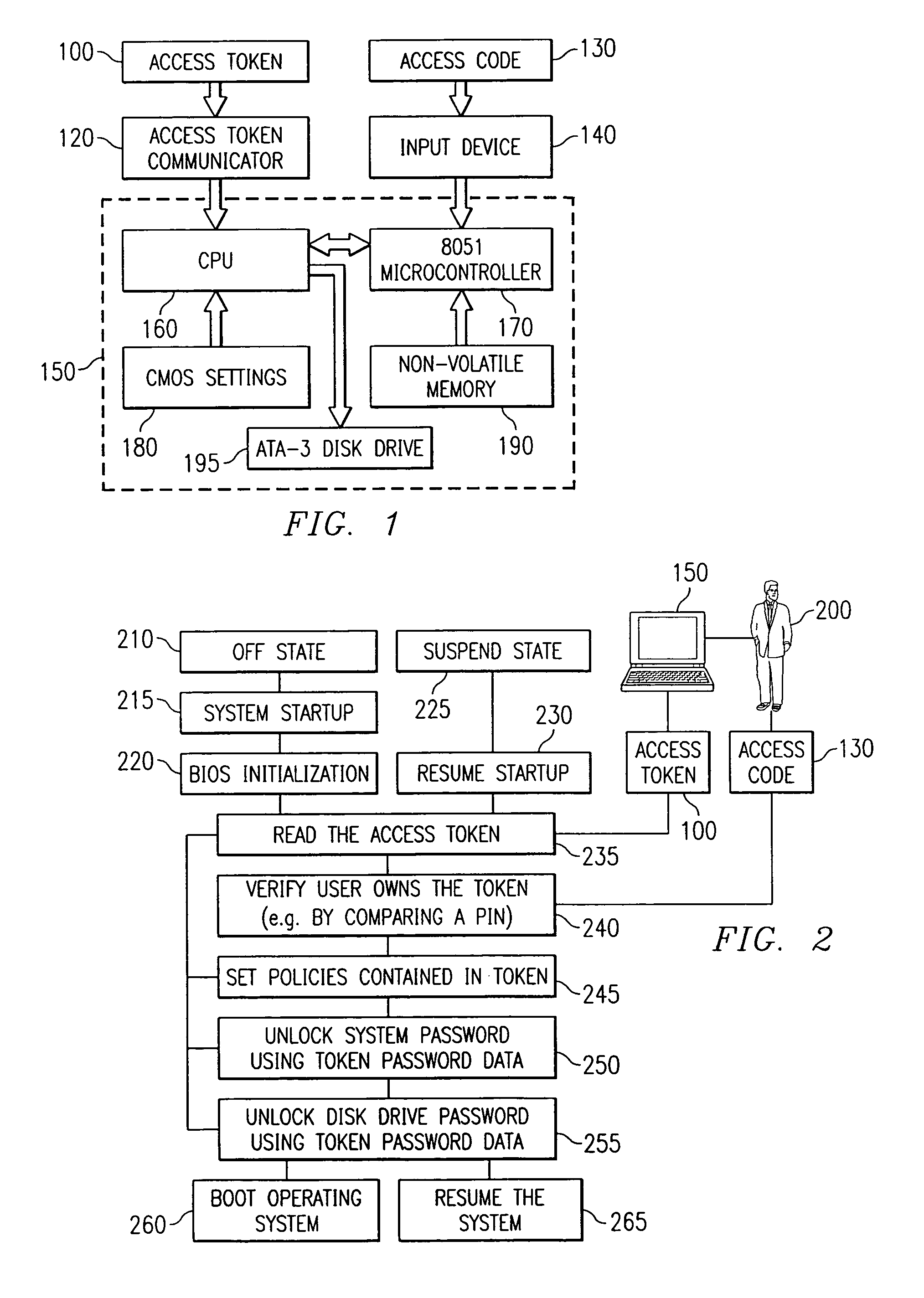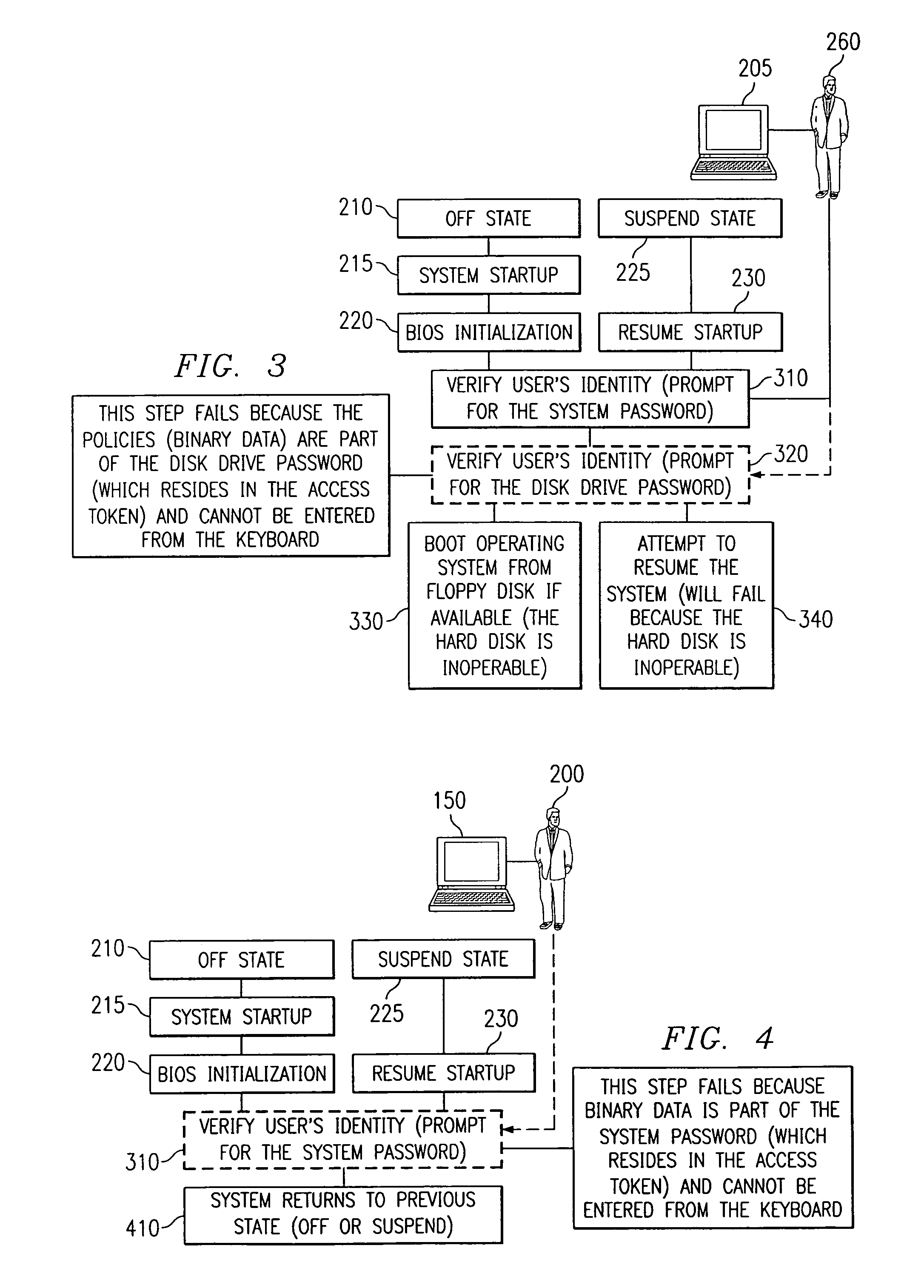Portable computer system with hierarchical and token-based security policies
a computer system and hierarchical technology, applied in the field of computer systems, can solve the problems of stealing or using the employee's computer system, and the computer system of employees is at risk
- Summary
- Abstract
- Description
- Claims
- Application Information
AI Technical Summary
Benefits of technology
Problems solved by technology
Method used
Image
Examples
Embodiment Construction
)
[0036]Referring initially to FIG. 1, illustrated is a block diagram of a computer system 150 employing an access token 100. The computer system 150 is illustrated as having a central processing unit (or “CPU”) 160, a nonvolatile storage device 195 such as an ATA-3 type hard disk drive (or “HDD”), and an 8051 micro-controller 170. CPU 160 is shown receiving CMOS settings 180 from an area of nonvolatile memory, while the 8051 micro-controller 170 is shown receiving data from nonvolatile memory 190. Access token reader 120 is shown reading access token 100 and providing data to CPU 160 while password or access code 130 is shown entered into input device 140 and transmitted to micro-controller 170. Micro-controller 170 determines if access code 130 is correct and returns a “true” or “false” to CPU 160.
[0037]In one implementation, access token 100 is a smart card with circuitry preventing the alteration of the access token data that is read by the access token communicator 120. On a not...
PUM
 Login to View More
Login to View More Abstract
Description
Claims
Application Information
 Login to View More
Login to View More - R&D
- Intellectual Property
- Life Sciences
- Materials
- Tech Scout
- Unparalleled Data Quality
- Higher Quality Content
- 60% Fewer Hallucinations
Browse by: Latest US Patents, China's latest patents, Technical Efficacy Thesaurus, Application Domain, Technology Topic, Popular Technical Reports.
© 2025 PatSnap. All rights reserved.Legal|Privacy policy|Modern Slavery Act Transparency Statement|Sitemap|About US| Contact US: help@patsnap.com



